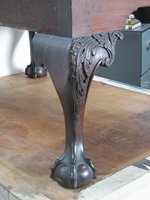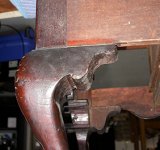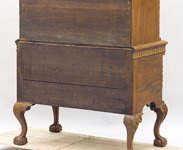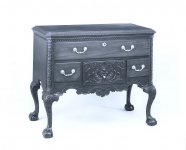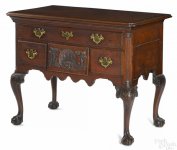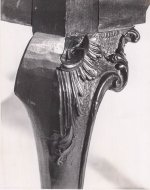I am starting a lowboy based on a photo. I plan to have acanthus style carvings on the front leg knees which will flow into the transition blocks. Since I am lacking a side view I don't know how transition blocks are handled on the rear legs. I am not planning to carve the rear legs so I am not sure how the transition blocks are accomplished - plain?
Ay suggestions would be appreciated.
Ay suggestions would be appreciated.

